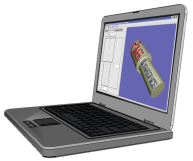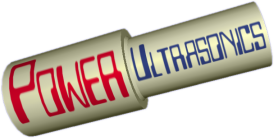A new online ultrasonics components store has just opened at www.UltrasonicsWorld.com. Check their amazing prices for replacement ultrasonics components, fully compatible with the major manufacturers' originals at a fraction of the cost.
You are here
Ultrasonic cutting
12 January, 2006 - 15:56 — Sergi
Congratulation for this excellent forum !!
Best wishes for 2006 !
I am working with several commercially available devices that cut materials and they have obviously distinct cutting efficiencies.
I would like to physically characterize the devices and their cutting abilities.
I guess they differ in power, resonance frequency, micro-motion amplitude in the X, Y, and Z axes, cutting power and probably many other parameters that I even don't know about.
My question is (simple, hopefully the answer is simple as well) what to measure , how or where to measure all these parameters.
It is difficult, expensive, complexe, etc...
Best wishes to Chris and every body else
Sergi.
Forums:


Re: Ultrasonic cutting
Hi Sergi,
Thanks for those kind words and best wishes for the New Year to you too!
I think you've got all the most important ultrasonics parameters there - frequency amplitude and power. No doubt you'll also be monitoring the cutting process itself (eg. force, velocity along and into the cut, quality of cut edges).
Measuring techniques:
Frequency is easy - just use a cheap digital frequency meter (I'm assuming you'll already have automatic frequency control on the generators to maintain resonance).
Power - not too difficult; there are power meters around (often built into the generators). Just be careful that you're measuring true power not volt-amps as the phase angle can be a bit variable around resonance... (understatement!)
Amplitude is the most difficult and expensive, at least if you want accurate results. AFAIK laser interferometry would be the best option (and in some cases can measure both in-plane and out-of plane motion).
I've used a non-contact inductive sensor in the past but it was only for out-of plane motion and I think ferromagnetic materials were out.
Finally there's always the old standby - a microscope and strong light source. Not the most accurate but cheap and simple for out-of-plane motion. Perhaps in your application you could make two sets of measurements - one looking at the edge of the blade, the other at the side.
Hope that gives you some idea where to start anyway. Please come back if you have further questions. Is there any chance that you'd be willing to share the results of your research when you're done?
Regards
Chris